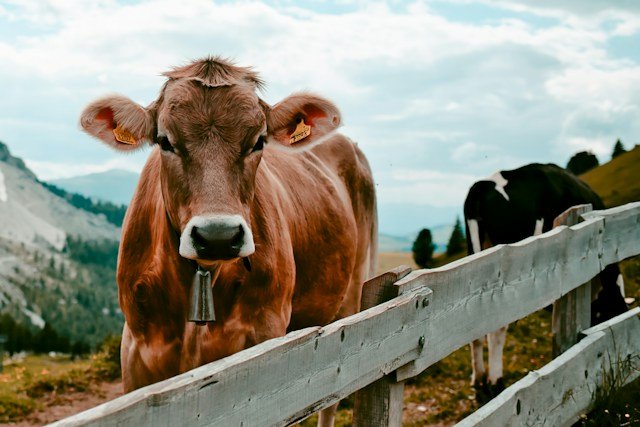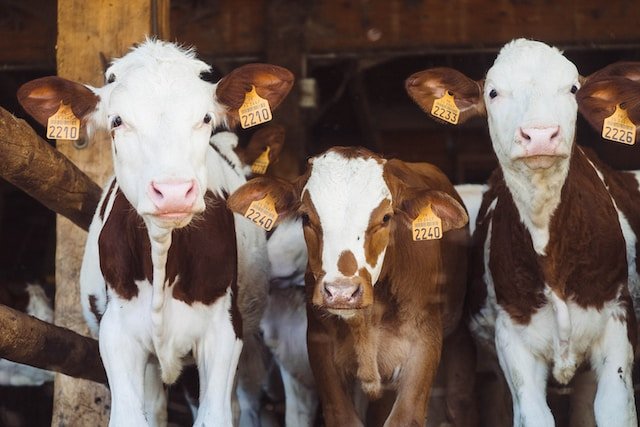Is A Cow A Consumer
The idea of consumers in ecological contexts typically invokes images of scavengers, predators, and other creatures that are directly involved in the consumption of living creatures. But, in this ecological tapestry, one relatively unassuming player challenges our traditional understanding: that of the cattle. When we look into the intricate interactions of ecosystems, it becomes essential to examine the function of herbivores within the wider perspective of consumerism.
This article will help us unravel the mystery of the possibility that a cow could be considered a consumers within the ecological environment. By examining the habits of eating along with the environmental impacts and ethical concerns that are associated with cows, we set out to search for the intricate links with these precious herbivores as well as the complex interconnectedness of life.
Understanding Consumers In Ecology

In the world of ecology, the word “consumer” holds a specific and significant significance. In ecological systems, consumers are the organisms that either directly or indirectly gain energy by eating other living organisms or byproducts of their consumption. This idea plays a vital role in understanding the flow of energy as well as nutrients in ecosystems. Let’s take a look at the elements of understanding the ecology of consumers:
1. Definition of Consumers
In terms of ecological considerations, the consumers comprise a wide population that is classified by their preferences for food. The main categories are carnivores, herbivores, and omnivores. These distinctions are crucial to understanding the intricate interrelations and interdependencies in ecosystems.
2. Classification of Consumers
- Herbivores: These are the organisms that primarily eat plants and other vegetation. Their role is vital in shaping the population of plants and altering the distribution of plant species in ecosystems.
- Carnivores: Carnivores are a group of consumers who predominantly feed on other mammals. They play a vital part in regulating the population of herbivores, and in keeping the balance of species in an ecosystem.
- Omnivores: Omnivores consume an eating plan that incorporates both animal and plant material. Their flexibility allows them to take on different ecological niches and be involved in different types of food systems.
3. Ecological Relationships
Consumers are an integral part of food chains and webs, showing the interdependence of various species in an ecosystem. Understanding these connections is crucial to determining the effect of a population’s changes on the whole ecosystem.
4. Trophic Levels and Energy Flow
The consumers are grouped into trophic levels based on their place in the food chain. Primarily-consuming consumers, such as herbivores, reside in the first level of trophic. They are then secondary and tertiary consumers. This hierarchy depicts the flow of energy throughout the ecosystem.
The Cow As A Herbivore: Unveiling Dietary Patterns And Ecological Significance
In the vast realm of ecology, herbivores stand out as an individual group that rely heavily on plant-based diets to survive. Of all the herbivores, the cow is one of the most notable examples, and its diet plays a major role in shaping the local ecosystems as well as human agriculture practices. Let’s look at the traits that make the cow an herbivore and then look at the broader ecological implications of its plant-based diet.
1. Definition of Herbivores
Herbivores are species that predominantly consume vegetation and plants. Since they are primary consumers, they are a crucial connection in the chain of food, helping in the transfers of energy and nutrients from the plant to higher levels of trophic.
2. Cow’s Dietary Habits
Cows, being herbivores, have a digestive system that can break down complicated plant materials. Their diets are mostly comprised of forbs, grasses, and other plant-based compounds. This unique digestive capability permits them to obtain nutrients from cellulose, which is a substance that is abundant in the cell wall.
3. Contribution to Plant consumption
In consuming a wide range of plant matter, Cows are active in the management of the plant population. Their grazing patterns affect the composition and structure of the vegetation within an ecosystem, influencing the landscape and increasing the diversity.
4. Role in the Carbon Cycle
Herbivores, such as cows, are a key element within the cycle of carbon. Through photosynthesis, plants absorb carbon dioxide that is released from the atmosphere, and when herbivores eat these plants, carbon gets incorporated within their bodies. Understanding this process is crucial in assessing the effects of herbivores on carbon sequestration as well as general environmental health.
5. Interactions with other Species
The characteristic of cows that are herbivores creates complicated ecological connections. They can serve as prey for carnivores, aid in seed dispersal by their digestive systems, and influence the supply of resources available to other herbivores that share the same habitat.
6. Human-Agricultural Interactions
Beyond their ecological significance, the herbivore diets of cows can have a significant impact on agriculture. They are the primary source of dairy and meat products and are an essential element of the human diet as well as economies around the world.
Is A Cow A Consumer

Yes, the cow is consumer. They are herbivores. This means that they eat plants. They are the primary consumers in the ecosystem. Primarily, they are the organisms that consume producers, that is, the organisms that produce themselves food. That is, cows eat plants that are producers, and they are consumed by other animals, like animals like wolves and lions. They are second-tier consumers.
Here’s a graphic representation that shows a food chain which includes the cow:
Producers: plants
The primary consumers cows
Secondary consumers: Wolfs, lions
Energy Flow In Ecosystems: Understanding The Vital Pathways
The movement of energy through ecosystems is an important concept in ecology. It reveals an intricate network of interactions that support the life of Earth. Energy transfer is essential for the proper functioning of ecosystems and follows distinct paths through the trophic levels. Let’s look at the processes of energy flow and its importance in maintaining the equilibrium of ecosystems.
1. Trophic Levels
Ecosystems are arranged into trophic levels that represent the order that facilitates energy exchange. The primary producers, typically algae or plants, reside in the top trophic level and convert sunlight into chemical energy by photosynthesis. The next levels are comprised of consumers, such as herbivores, carnivores, and omnivores.
2. Energy Transfer in Food Chains
Energy is transferred through ecosystems by food chains, showing how energy is transferred from one species to another. Primary producers convert energy into herbivores. They transform into the food source for carnivores as well as Omnivores. This process of transfer creates a chain that binds all living organisms within an ecosystem.
3. Energy Pyramid
The energy pyramid is the reduction in energy available as one progresses up to the higher trophic levels. At every level, only a small portion of the energy can be moved to the next level, and the rest is wasted as energy during metabolic processes. This shape of the pyramid highlights the effectiveness of energy transfer and the limitations of the number of trophic levels within an ecosystem.
4. Primary Consumers
Herbivores, as primary consumers, reside at the second level of trophic. They get energy from consuming primary producers, like plants. The energy produced by plants is used by herbivores in metabolism, growth, and reproduction.
5. Secondary and Tertiary Consumers
Omnivores and carnivores, which are classified as tertiary and secondary consumers, are found in higher levels of trophic. They get energy from eating herbivores and other species of consumers. The amount of energy available at these levels diminishes as a result of the cumulative loss of energy in the ecosystem.
Conclusion
In the end, the study of whether cows count as consumers in ecological frameworks has revealed the complicated roles and implications of herbivores. Being a major consumer, the cow is a major influencer of the flow of energy in ecosystems through eating plant-based substances and influencing the regulation of the plant population.
The study of the role of herbivores in cows has highlighted their ecological importance, especially in influencing landscapes, playing a role in the process of carbon cycling, and creating complex connections within ecosystems. But, this study raises questions about the environmental consequences of massive cattle farming, which raises concerns about the sustainability of these practices and ethical considerations.
The dual nature of cows, contributing to the balance of nature and also as subjects to human agriculture, highlights the necessity of an inclusive approach to coexistence that takes into account the intricate interplay between herbivores as well as their surroundings.
The question of whether a cattle is an animal or a human being is not a simple distinction and serves as a means to greater understanding of the complex dynamics that affect the way life is conducted on Earth.


















